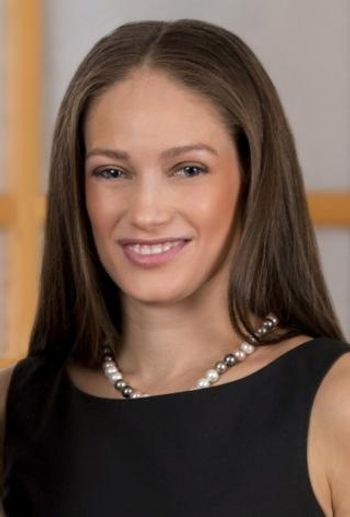
Clofarabine and Cladribine May Help Combat Ewing Sarcoma
Investigators have discovered that clofarabine and cladribine may be used as a targeted therapy in diseases where CD99 plays a critical role, including Ewing sarcoma and auto-immune disorders.
Clofarabine may benefit patients with Ewing sarcoma when combined with other therapies, according to researchers at Georgetown Lombardi Comprehensive Cancer Center. They
The researchers decided to take an unconventional approach and it paid off. They searched a National Cancer Institute database of 2,607 compounds to find one that could potentially help Ewing sarcoma patients. However, they did not tailor the search based on finding the right molecule that perfectly fits into a pre-selected groove in the structure of CD99, which is significantly expressed in Ewing sarcoma cells. Instead, they looked to see if anything would bind anywhere on the protein, and then examined what happened when these molecules stuck together.
They found 150 compounds that could link to CD99, which is a druggable target protein. “We discovered the first-in-class small molecule inhibitors for CD99 protein. These compounds directly bind to CD99 protein on cell surface and inhibit its biological functions. These compounds are Food and Drug Administration–approved agents and their known mechanism of action is inhibition of DNA synthesis. Our work demonstrated a novel mechanism of action for existing drugs that is independent from inhibition of DNA,” said study investigator Aykut Ãren, MD, who is an associate professor of molecular biology at Georgetown University School of Medicine in Washington, D.C.
Dr. Ãren collaborated with investigators in Italy and Turkey and they discovered that inhibiting CD99 may work as treatment for other cancers or for a number of immune disorders that display these proteins. The team concluded there are two very important implications from their initial findings based on lab and animal studies. “First, clofarabine and cladribine can be used as a targeted therapy for additional malignancies where CD99 plays a critical role, the most important of which is Ewing sarcoma. Others may include AML [acute myeloid leukemia] and gliomas,” Dr. Ãren told Cancer Network. In addition, he said CD99 expression may be used for selecting the right AML patient population that may respond to treatment.
The second implication may be for its potential use in autoimmune diseases. “Cladribine is already being used in treating an autoimmune disease,” explained Dr. Ãren. “Our findings can explain how cladribine may have been targeting CD99.”
Currently, the researchers are trying to make clofarabine derivatives that can still bind to CD99, but not inhibit DNA synthesis. It is hoped that these new derivatives could become CD99-focused targeted therapies. The researchers theorize the CD99-focused targeted therapies could have significantly fewer side effects because they would be more selective in their inhibition of DNA synthesis in normal cells.
Newsletter
Stay up to date on recent advances in the multidisciplinary approach to cancer.





![According to John Henson, MD, “What we need are better treatments to control the [brain] tumor once it’s detected.”](https://cdn.sanity.io/images/0vv8moc6/cancernetwork/e0d29c38bb732429ae370e4ef7d1829a10c96446-2992x1684.png?w=350&fit=crop&auto=format)












































































